A Self-Healing and Electrical-Tree-Inhibiting Epoxy Composite with Hydrogen-Bonds and SiO2 Particles
Abstract
:1. Introduction
2. Materials and Methods
2.1. Materials
2.2. Preparation of HSM
2.3. Surface Modification of SiO2 Particles
2.4. Preparation of Epoxy/HSM/SiO2 Composites
2.5. Characterization
2.6. Electrical Treeing Experiments
3. Results and Discussion
3.1. Material Characterization
3.2. Electrical Treeing Experiments
3.3. Further Analysis of the Electrical Treeing
3.4. Discussion
4. Conclusions
Supplementary Materials
Acknowledgments
Author Contributions
Conflicts of Interest
References
- Auckland, D.W.; Rashid, A.; Tavernier, K.; Varlow, B.R. Stress relief by non-linear fillers in insulating solids. In Proceedings of the Conference on Electrical Insulation and Dielectric Phenomena, Arlington, TX, USA, 23–26 October 1994. [Google Scholar]
- Auckland, D.W.; Wenbin, S.; Varlow, B.R. Smart insulation for tree resistance and surge absorption. In Proceedings of the Conference on Electrical Insulation and Dielectric Phenomena, Virginia Beach, VA, USA, 22–25 October 1995. [Google Scholar]
- Nelson, J.K. Dielectric Polymer Nanocomposites; Springer: Berlin/Heidelberg, Germany, 2009. [Google Scholar]
- Croce, F.; Appetecchi, G.B.; Persi, L.; Scrosati, B. Nanocomposite polymer electrolytes for lithium batteries. Nature 1998, 394, 456–458. [Google Scholar]
- Zhou, Y.; Liu, R.; Hou, F.; Xue, W.; Zhang, X. Effect of silica particles on electrical treeing initiation in silicone rubber. In Proceedings of the Conference on Electrical Insulation and Dielectric Phenomena, Montreal, QC, Canada, 14–17 October 2012. [Google Scholar]
- Blaiszik, B.J.; Kramer, S.L.B.; Olugebefola, S.C.; Moore, J.S.; Sottos, N.R.; White, S.R. Self-healing polymers and composites. Annu. Rev. Mater. Res. 2010, 40, 179–211. [Google Scholar] [CrossRef]
- White, S.R.; Sottos, N.R.; Geubelle, P.H.; Moore, J.S.; Kessler, M.R.; Sriram, S.R.; Brown, E.N.; Viswanathan, S. Autonomic Healing of Polymer Composites. Nature 2001, 40, 794–797. [Google Scholar] [CrossRef] [PubMed]
- Brown, E.N.; Sottos, N.R.; White, S.R. Fracture Testing of a Self-Healing Polymer Composite. Exp. Mech. 2002, 42, 372–379. [Google Scholar] [CrossRef]
- Caruso, M.M.; Blaiszik, B.J.; White, S.R.; Sottos, N.R.; Moore, J.S. Full recovery of fracture toughness using a nontoxic solvent-based self-healing system. Adv. Funct. Mater. 2008, 18, 1898–1904. [Google Scholar] [CrossRef]
- Brown, E.N.; Kessler, M.R.; Sottos, N.R.; White, S.R. In Situ poly(urea-formaldehyde) microencapsulation of dicyclopentadiene. J. Microencapsul. 2003, 20, 719–730. [Google Scholar] [CrossRef] [PubMed]
- Williams, G.; Trask, R.; Bond, I. A self-healing carbon fibre reinforced polymer for aerospace applications. Compos. Part A 2007, 38, 1525–1532. [Google Scholar] [CrossRef]
- Hansen, C.J.; Wu, W.; Toohey, K.S.; Sottos, N.R.; White, S.R.; Lewis, J.A. Self-Healing Materials with Interpenetrating Microvascular Networks. Adv. Mater. 2009, 21, 4143–4147. [Google Scholar] [CrossRef]
- Trask, R.S.; Bond, I.P. Biomimetic self-healing of advanced composite structures using hollow glass fibres. Smart Mater. Struct. 2006, 15, 704. [Google Scholar] [CrossRef]
- Trask, R.S.; Williams, G.J.; Bond, I.P. Bioinspired self-healing of advanced composite structures using hollow glass fibres. J. R. Soc. Interface 2007, 4, 363–371. [Google Scholar] [CrossRef] [PubMed]
- Xiao, D.S.; Yuan, Y.C.; Rong, M.Z.; Zhang, M.Q. A Facile strategy for preparing self-healing polymer composites by incorporation of cationic catalyst-loaded vegetable fibers. Adv. Funct. Mater. 2009, 19, 2289–2296. [Google Scholar] [CrossRef]
- Park, J.S.; Takahashi, K.; Guo, Z.; Wang, Y.; Bolanos, E.; Hamann-Schaffner, C.; Hahn, H.T. Towards development of a self-healing composite using a mendable polymer and resistive heating. Compos. Mater. 2008, 42, 2869–2881. [Google Scholar] [CrossRef]
- Peterson, A.M.; Jensen, R.E.; Palmese, G.R. Room-temperature healing of a thermosetting polymer using the Diels-Alder reaction. ACS Appl. Mater. Interfaces 2010, 2, 1141–1149. [Google Scholar] [CrossRef] [PubMed]
- Kostopoulos, V.; Kotrotsos, A.; Baltopoulos, A.; Tsantzalis, S.; Tsokanas, P.; Loutas, T.; Bosman, A.W. Mode II fracture toughening and healing of composites using supramolecular polymer interlayers. Express Polym. Lett. 2016, 10, 914. [Google Scholar] [CrossRef]
- Meure, S.; Wu, D.Y.; Furman, S.A. FTIR study of bonding between a thermoplastic healing agent and a mendable epoxy resin. Vib. Spectrosc. 2010, 52, 10–15. [Google Scholar] [CrossRef]
- Karger-Kocsis, J. Self-healing properties of epoxy resins with poly (ε-caprolactone) healing agent. Polym. Bull. 2016, 73, 3081–3093. [Google Scholar] [CrossRef]
- Scholz, S.; Walzer, K.; Leo, K. Analysis of Complete Organic Semiconductor Devices by Laser Desorption/Ionization Time-of-Flight Mass Spectrometry. Adv. Funct. Mater. 2008, 18, 2541–2547. [Google Scholar] [CrossRef]
- Dang, Z.; Yuan, J.; Yao, S.; Liao, R. Flexible Nanodielectric Materials with High Permittivity for Power Energy Storage. Adv. Mater. 2013, 25, 6334–6365. [Google Scholar] [CrossRef] [PubMed]
- Tavernier, K.; Varlow, B.R.; Auckland, D.W. Electrical tree modelling in non-linear insulation. In Proceedings of the Conference on Electrical Insulation and Dielectric Phenomena, Atlanta, GA, USA, 25–28 October 1998. [Google Scholar]
- Nyamupangedengu, C.; Kochetov, R.; Morshuis, P.H.F.; Smit, J.J. A study of electrical tree partial discharges in nanocomposite epoxy. In Proceedings of the Conference on Electrical Insulation and Dielectric Phenomena, Montreal, QC, Canada, 14–17 October 2012. [Google Scholar]
- Du, B.X.; Han, T.; Su, J.G. Effects of low temperature on treeing phenomena of silicone rubber/SiO2 nanocomposites. In Proceedings of the Conference on Electrical Insulation and Dielectric Phenomena, Shenzhen, China, 20–23 October 2013. [Google Scholar]
- Tanaka, T.; Iizuka, T.; Sekiguchi, Y.; Murata, Y.; Ohki, Y. Tree initiation and growth in LDPE/MgO nanocomposites and roles of nano fillers. In Proceedings of the Conference on Electrical Insulation and Dielectric Phenomena, Virginia Beach, VA, USA, 18–21 October 2009. [Google Scholar]
- Shimizu, N.; Laurent, C. Electrical Tree Initiation. IEEE Trans. Dielectr. Electr. Insul. 1998, 5, 651–659. [Google Scholar] [CrossRef]
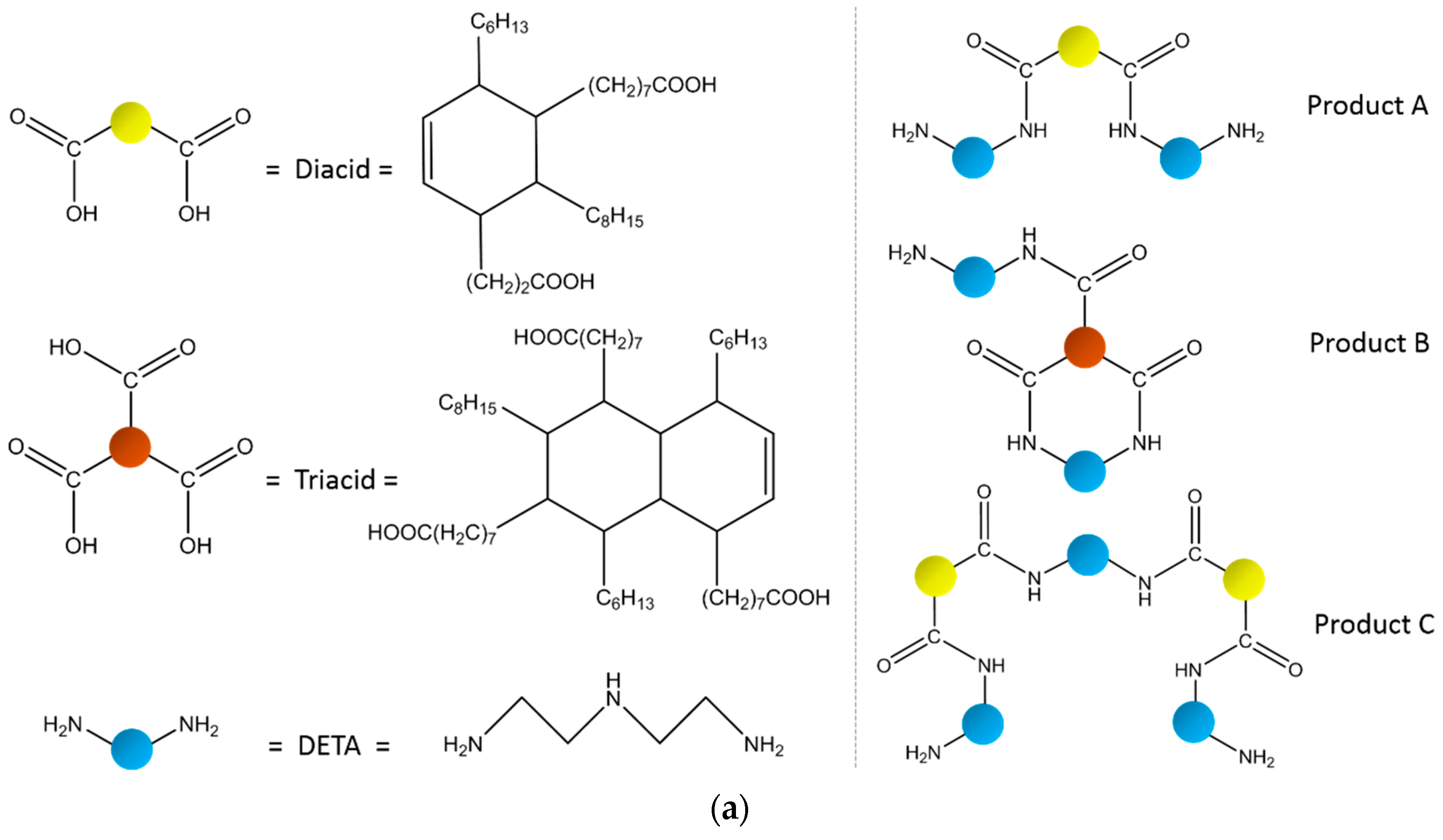
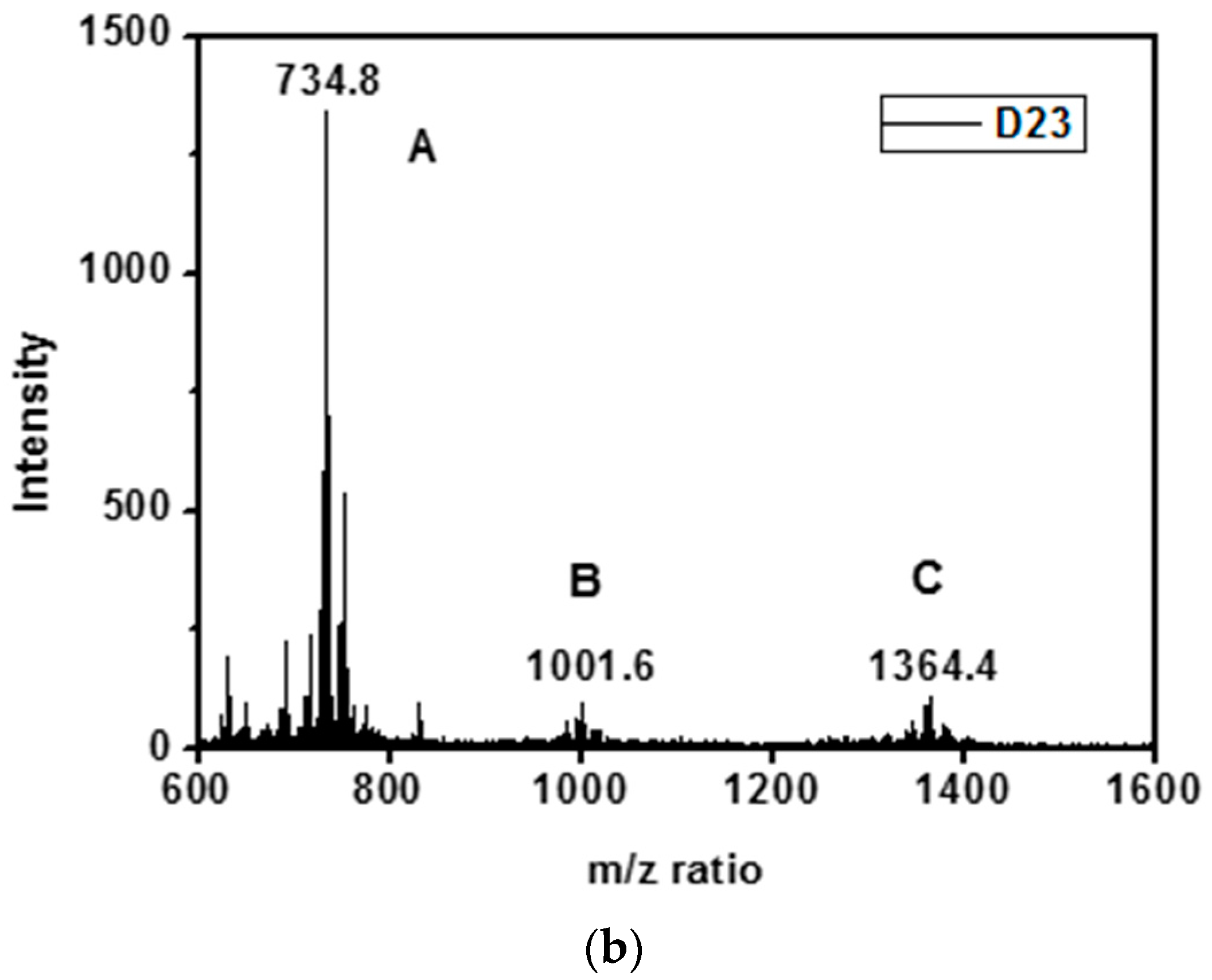
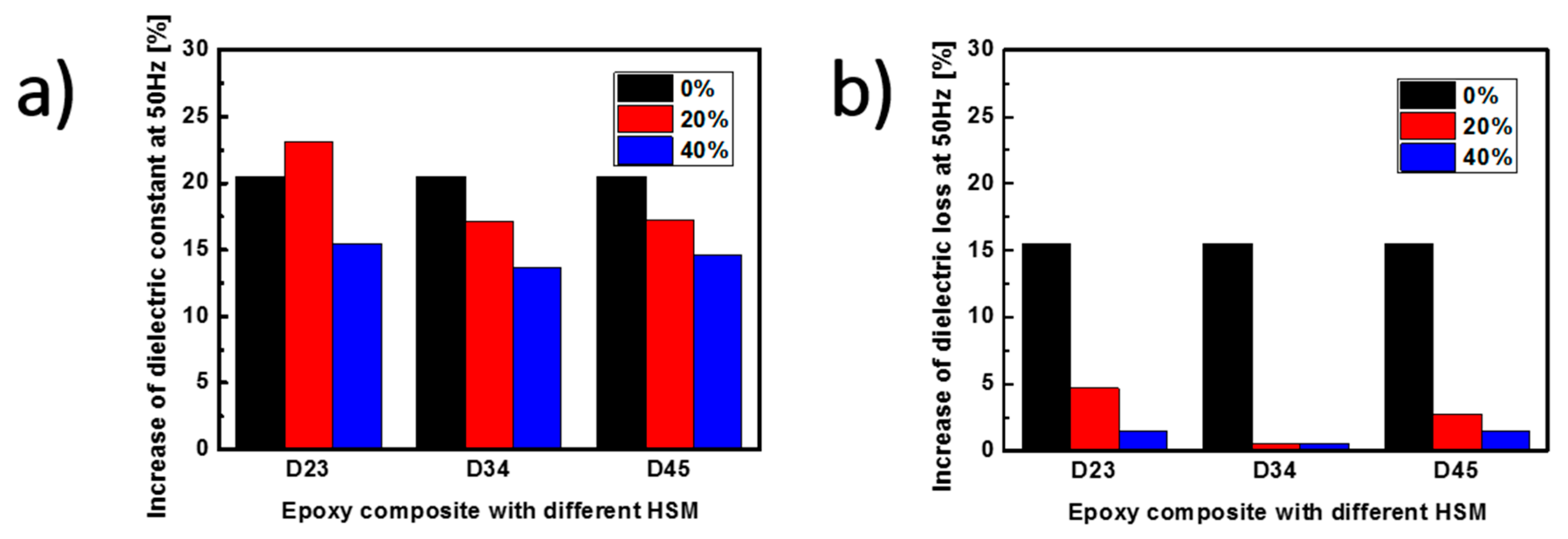
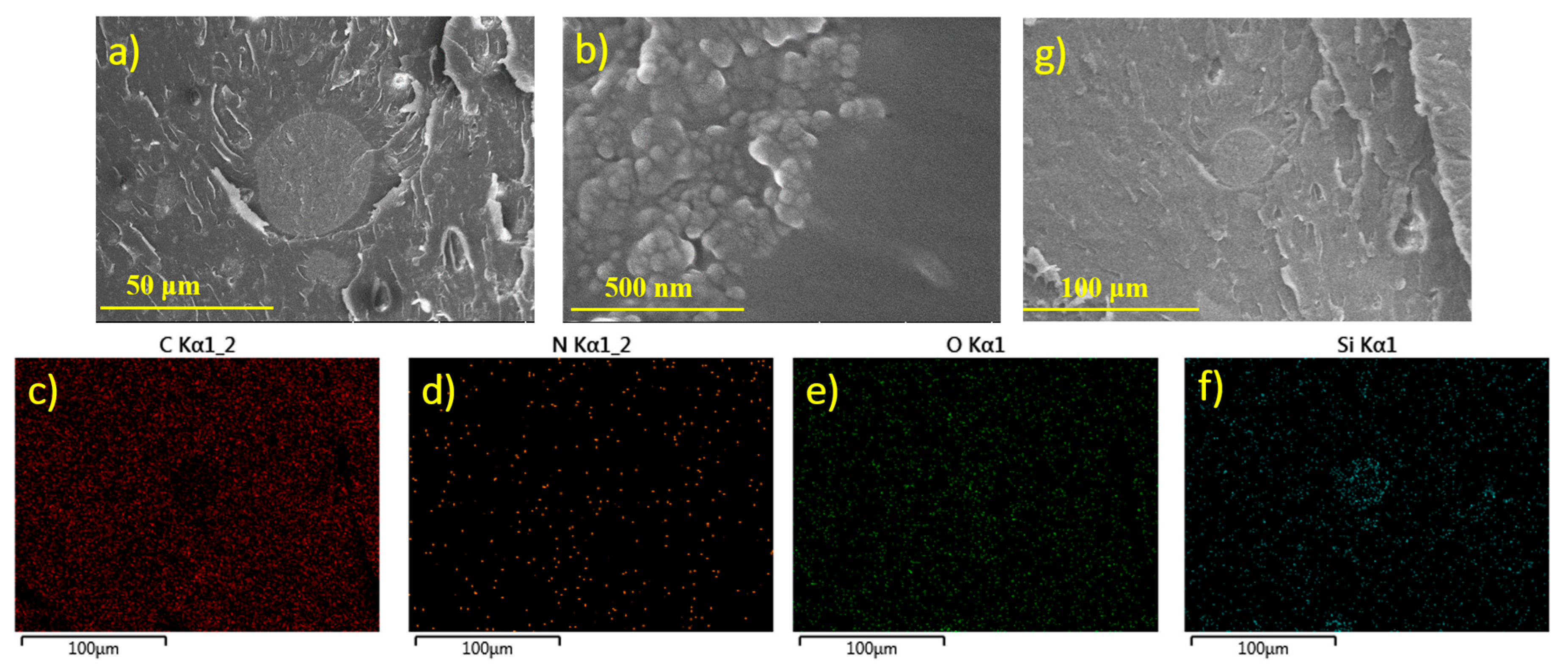

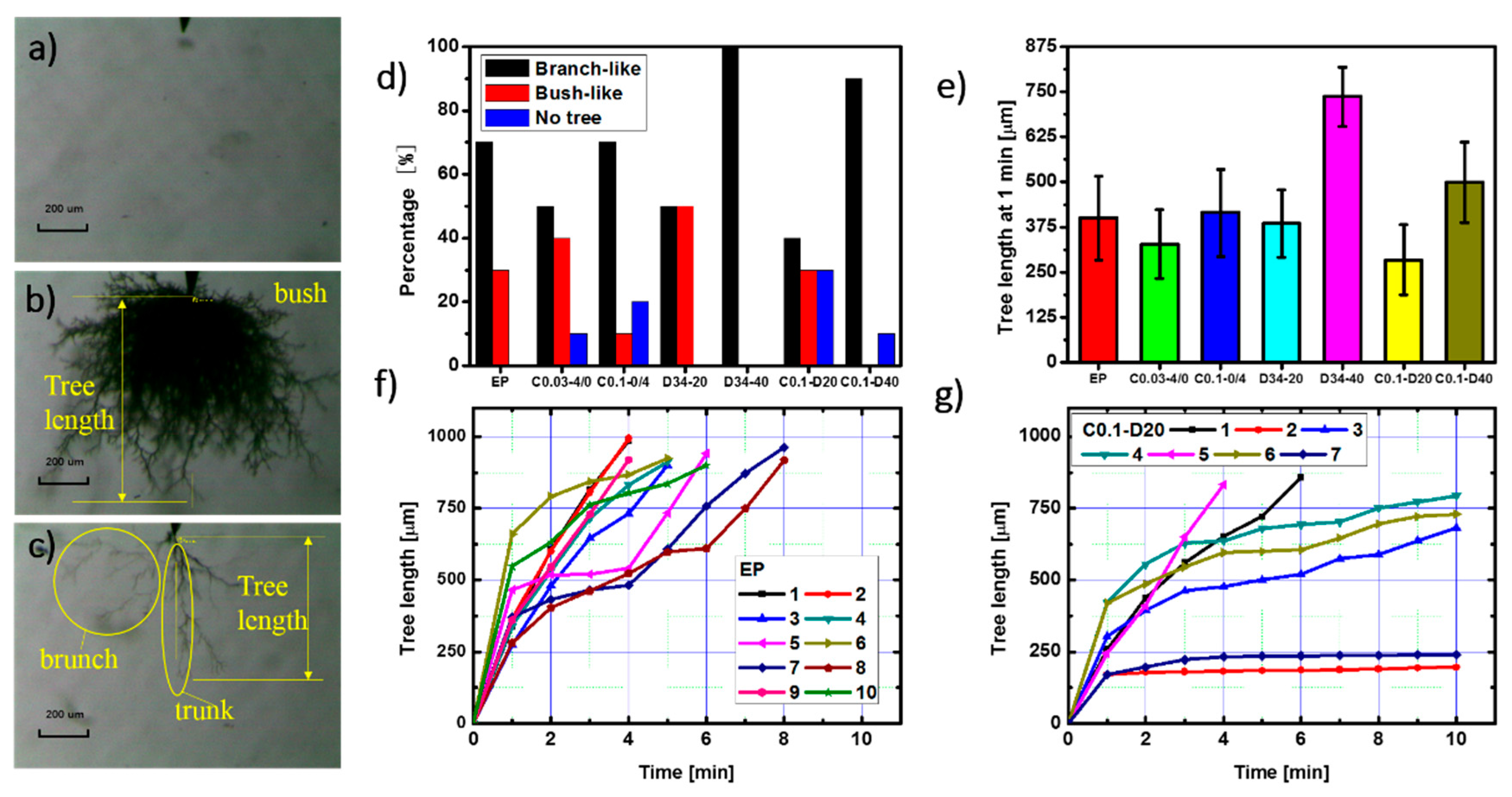
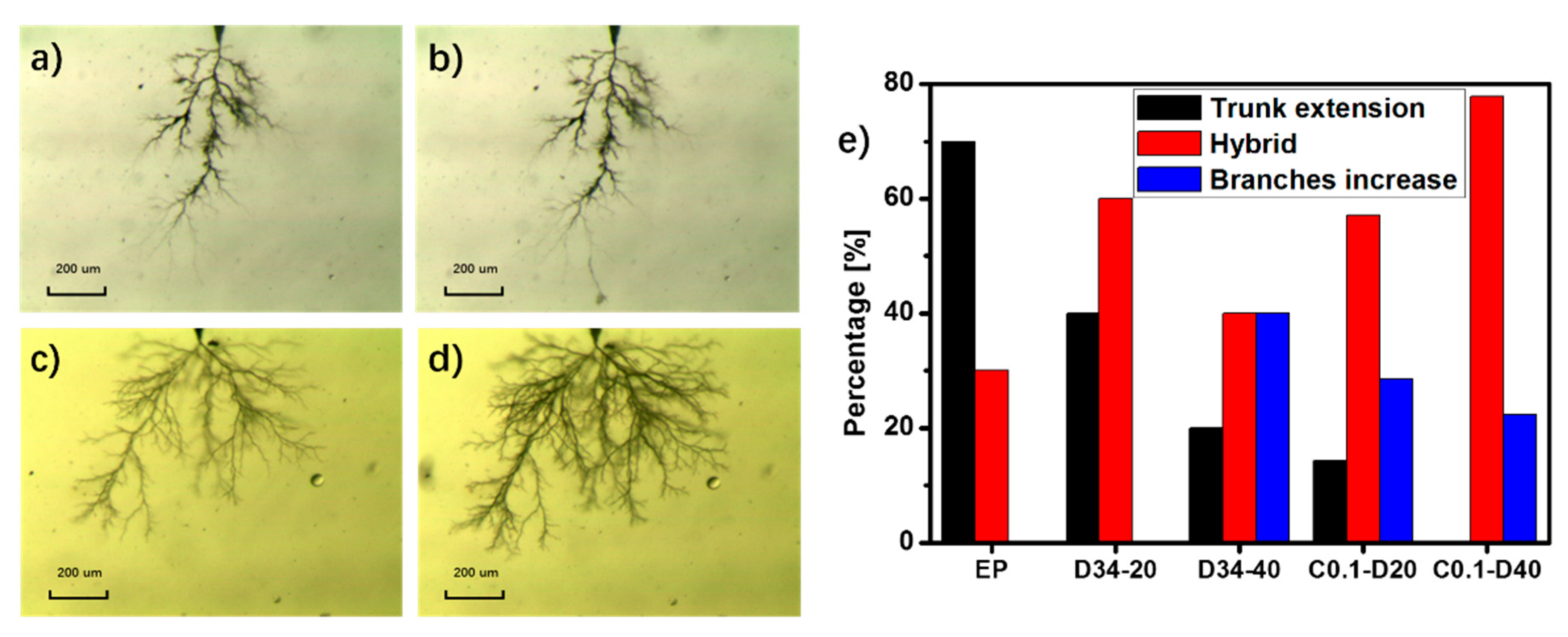


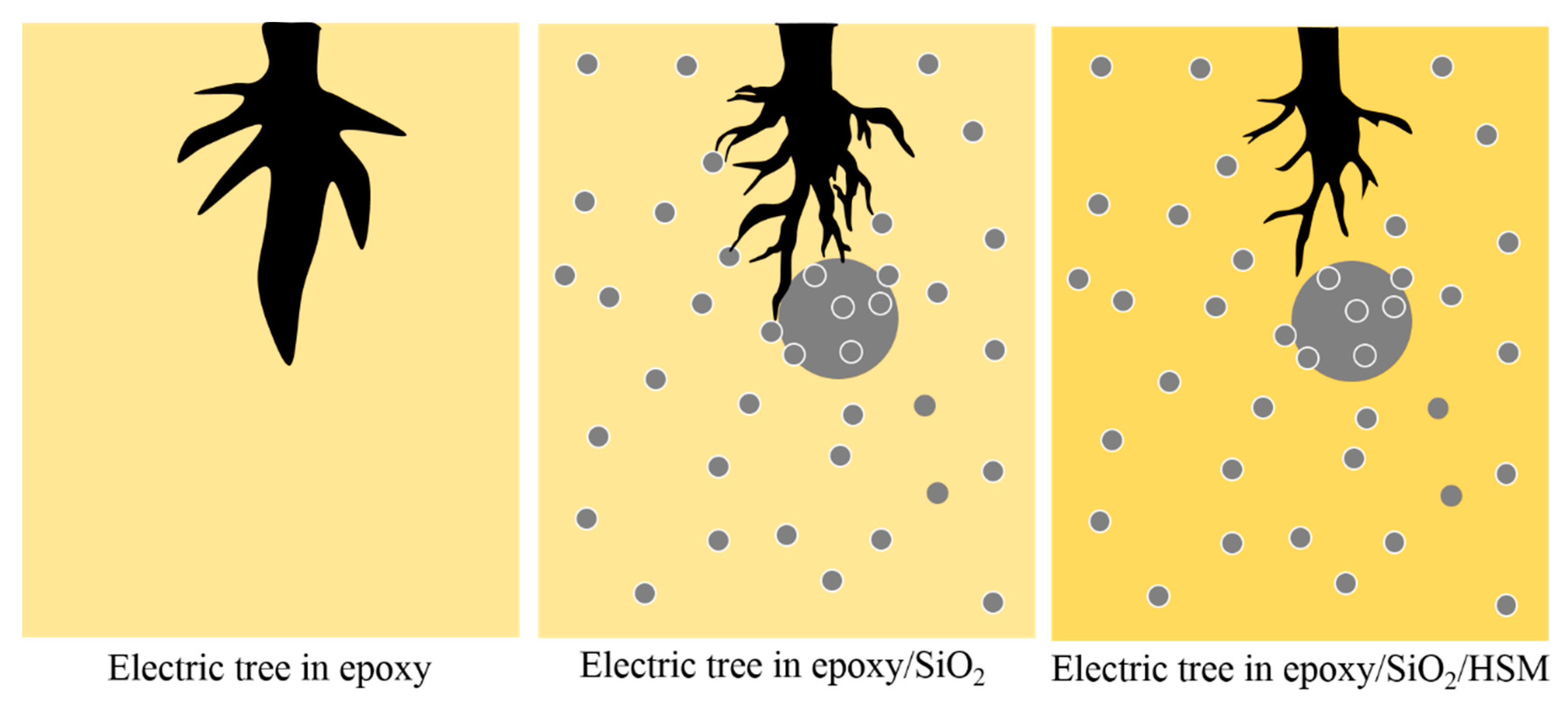
© 2017 by the authors. Licensee MDPI, Basel, Switzerland. This article is an open access article distributed under the terms and conditions of the Creative Commons Attribution (CC BY) license (http://creativecommons.org/licenses/by/4.0/).
Share and Cite
Bian, W.; Wang, W.; Yang, Y. A Self-Healing and Electrical-Tree-Inhibiting Epoxy Composite with Hydrogen-Bonds and SiO2 Particles. Polymers 2017, 9, 431. https://doi.org/10.3390/polym9090431
Bian W, Wang W, Yang Y. A Self-Healing and Electrical-Tree-Inhibiting Epoxy Composite with Hydrogen-Bonds and SiO2 Particles. Polymers. 2017; 9(9):431. https://doi.org/10.3390/polym9090431
Chicago/Turabian StyleBian, Wancong, Wenxuan Wang, and Ying Yang. 2017. "A Self-Healing and Electrical-Tree-Inhibiting Epoxy Composite with Hydrogen-Bonds and SiO2 Particles" Polymers 9, no. 9: 431. https://doi.org/10.3390/polym9090431



